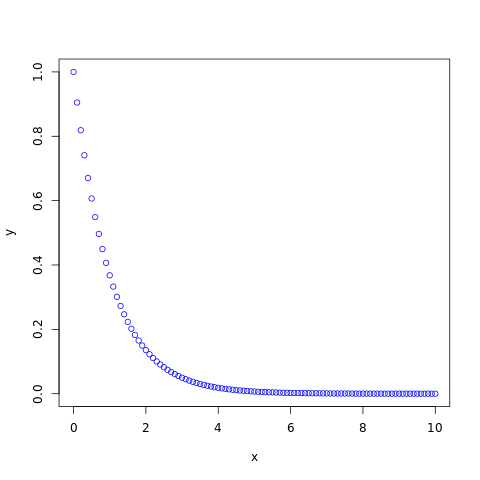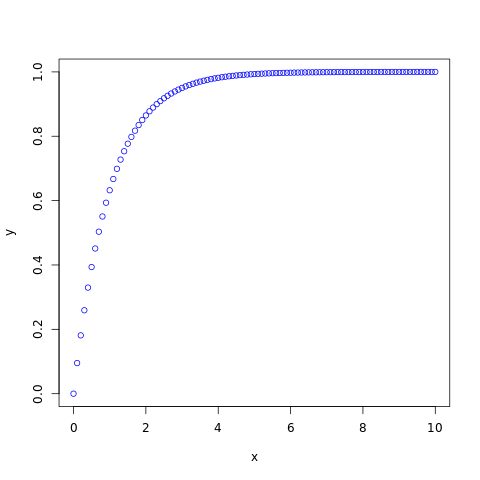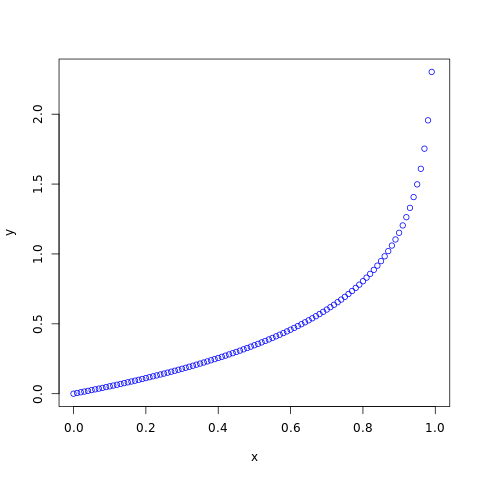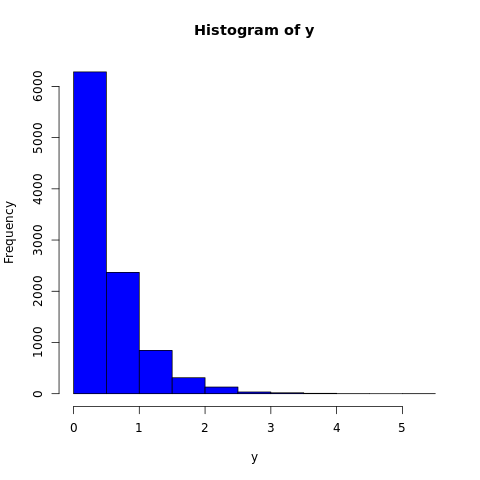R - Normal Distribution
Exponential distribution is the probability distribution of the time between events in a Poisson point process, i.e., a process in which events occur continuously and independently at a constant average rate. It is a particular case of the gamma distribution. For example, customers arriving at a store, file requests on a server etc.
The probability density function (pdf) of exponential distribution is defined as:

Where, λ is the rate parameter of the distribution.
An exponential distribution has mean 1/λ and variance 1/λ2.
The cumulative distribution function (cdf) evaluated at x, is the probability that the random variable (X) will take a value less than or equal to x. The cdf of exponential distribution is defined as:

In R, there are four functions which can be used to generate exponential distribution.
Syntax
dexp(x, rate) pexp(q, rate) qexp(p, rate) rexp(n, rate)
Parameters
x |
Required. Specify a vector of numbers. |
q |
Required. Specify a vector of numbers. |
p |
Required. Specify a vector of probabilities. |
n |
Required. Specify number of observation (sample size). |
rate |
Optional. Specify rate parameter of the sample data. Default is 1. |
dexp()
The dexp() function measures probability density function (pdf) of the distribution.
#creating a sequence of values between #0 to 10 with a difference of 0.1 x <- seq(0, 10, by=0.1) y <- dexp(x, 1) #naming the file png(file = "exponential.png") #plotting the graph plot(x, y, col="blue") #saving the file dev.off()
The output of the above code will be:

pexp()
The pexp() function returns cumulative distribution function (cdf) of the distribution.
#creating a sequence of values between #0 to 10 with a difference of 0.1 x <- seq(0, 10, by=0.1) y <- pexp(x, 1) #naming the file png(file = "exponential.png") #plotting the graph plot(x, y, col="blue") #saving the file dev.off()
The output of the above code will be:

qexp()
The qexp() function takes the probability value and returns cumulative value corresponding to probability value of the distribution.
#creating a sequence of probability from #0 to 1 with a difference of 0.01 x <- seq(0, 1, by=0.01) y <- qexp(x, 2) #naming the file png(file = "exponential.png") #plotting the graph plot(x, y, col="blue") #saving the file dev.off()
The output of the above code will be:

rexp()
The rexp() function generates a vector containing specified number of random values from the given exponential distribution. In the example below, a histogram is plotted to visualize the result.
#fixing the seed to maintain the #reproducibility of the result set.seed(10) x <- 10000 #creating a vector containing 10000 #exponentially distributed random values y <- rexp(x, 2) #naming the file png(file = "exponential.png") #plotting the graph hist(y, col="blue") #saving the file dev.off()
The output of the above code will be:



